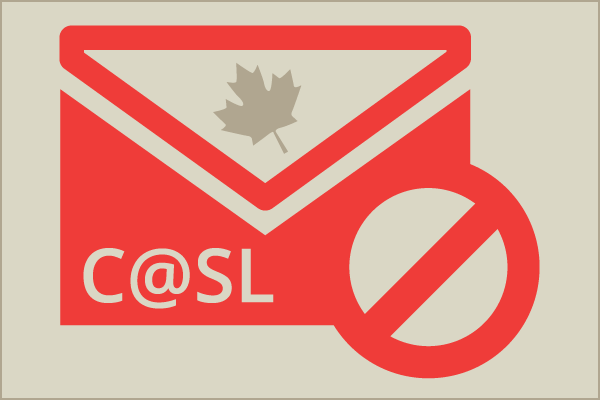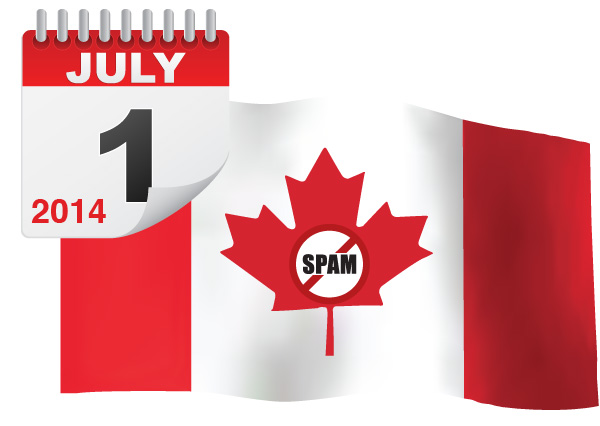 Canada’s new Anti-Spam Legislation, also known as CASL, goes into effect July 1, 2014. It invokes some pretty dramatic change in Canada’s laws and has been cited, as some the toughest anti-spam legislation in place in the world today. Fundamentally it puts the onus on the digital marketer to have all of their ducks in order, including consent from individuals on their lists, clear identification of the source of electronics messages, to clarity in messaging.
Canada’s new Anti-Spam Legislation, also known as CASL, goes into effect July 1, 2014. It invokes some pretty dramatic change in Canada’s laws and has been cited, as some the toughest anti-spam legislation in place in the world today. Fundamentally it puts the onus on the digital marketer to have all of their ducks in order, including consent from individuals on their lists, clear identification of the source of electronics messages, to clarity in messaging.
Most colleges and universities use email extensively in the recruitment process and all of that activity now falls under the rules laid out by CASL. If you are a US college emailing into Canada it also applies to you so you might want to read up.
I have added some helpful resources at the end of this post for those who would like to see more of the nitty gritty detail. We are not lawyers here so I recommend you do check further with these sites and with your own legal resources to finalize your understanding of how this legislation affects you and how best for your institution to proceed to address it.
What is the main purpose of the legislation?
To stop spam email.
When does it go into effect?
The law goes into effect July 1, 2014.
What are the main points of the legislation?
- The legislation requires that, BEFORE you communicate electronically with an individual, you must have their permission to send to them your institution’s commercial electronics messages (CEMs).
- All CEMs must meet the Permission and Content requirements of the legislation.
- CEMs include emails, newsletters, text messages, and direct messaging on social media
- Mass emails clearly fall under the definition of CEMs but so do individual emails sent from an admissions officer to a prospective student.
Who does this apply to?
This applies to individuals and organizations, if you 1) send out electronics messages from a computer in Canada or 2) send an electronic message to an individual who is at a computer in Canada. There has been some discussions about whether higher ed might be exempt from this legislation but at this time schools clearly are not exempt. This also applies to US institutions, at least theoretically, who email to prospective students in Canada, but the question of enforcement remains to be seen.
What are the “Permission Requirements”?
Under the new regulations, you may communicate with an individual if you have a previous business relationship with them or if they provide you with consent. A “business relationship” (as in being a registered student), gives you two years of consent from their last attendance to your college. There are two specific types of consent, providing different degrees of access. If an individual requested program information from your institution you have implied consent to communicate with them for 6 months. You can gain express consent from the individual if they subsequently opt into receiving commercial electronic messages from your institution. The opt-in box and associated copy must meet the exact specifications of the legislation (i.e. no pre-included check mark, etc) and must clearly state that they are agreeing to receive your “commercial messages”. Express consent does not expire, but can be revoked by an individual, by unsubscribing from your organizations CEMs. The legislation requires that you must also maintain “proof” of consent within a tracking system, but at this time it is rather unclear as to exactly what standard this will be held to.
What are the “Content Requirements”?
There are two main content requirements that include 1) a clear unsubscribe mechanism and unsubscribe link that will remove someone from your list within 10 days and 2 ) clear identification of who is sending the email including your name, address, phone number, and email and no false or misleading subject lines.
What is the 3 year transition period for?
The transition period gives you three years to convert individuals on your lists with implied consent to express consent. You will want to use this period to reach out to all of your valid contacts and encourage them to opt into express consent for the future. If there are individuals for whom you have implied consent but have not recently emailed it would be a good idea to get an email out to them before the July 1, 2014 date to refresh you last contacted date, and qualify them for the 3 year transition period, to give you that extra time to convert them to an express consent contact.
What are the penalties for CASL violations?
There are monetary penalties of up to $1 million dollars for individuals, (this could include your employees, managers, corporate officers and directors), acting within the scope of their employment and up to $10 million dollars for organizations for a CASL violation. Criminal charges may be laid for obstruction of a CASL investigation. Effective July 1 2017, individuals or corporations affected by a CASL contravention will have a right to pursue legal action against the offender.
Who will oversee these regulations?
These regulations will be overseen by three organizations; 1) The Canadian Radio-television and Telecommunications Authority (CRTC), 2) The Privacy Commissioner and the 3) federal Competition Bureau. This sounds very complicated but hopefully they will get a workable system into place in the near term.
What do you see as the biggest challenges to your internal systems to meet this new CASL standard? What do you think its overall impact will be on your marketing and general recruitment results. Do you think it will be successful in cutting down on the spam that fills our in-boxes or will the spammers just operate around them?
Additional resources:
The Canadian Anti-spam Legislation Website – The government of Canada’s CASL information website
The CASL Survival Guide – an excellent overview, and preparation guide for CASL, for marketers from Elite Email
The CASL Resource Centre from Davis LLP – an excellent CASL resource from leading Canadian lawfirm Davis LLP
Canada’s Anti-Spam Law FAQ – Accounting firm Deloitte’s faq on CASL






